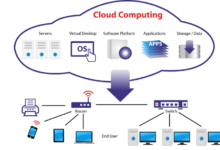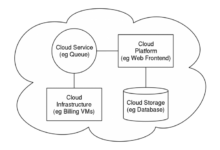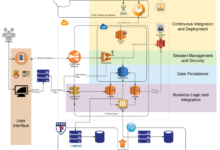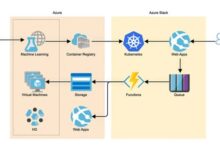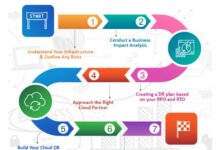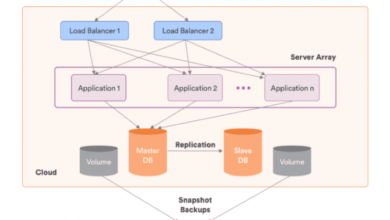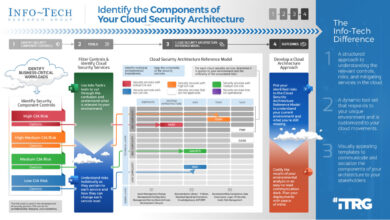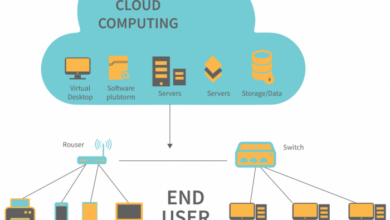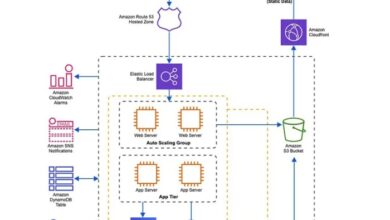Visualizing Cloud Architectures: A Comprehensive Guide to Different Types of Cloud Architecture Diagrams
In the realm of cloud computing, the ability to visualize and comprehend complex cloud environments is crucial. Cloud architecture diagrams serve as invaluable tools, enabling IT professionals, architects, and stakeholders to gain a clear understanding of cloud infrastructure, components, and interconnections.
These diagrams provide a visual representation of cloud environments, aiding in decision-making, troubleshooting, and optimizing cloud deployments.
From logical diagrams depicting abstract relationships to physical diagrams showcasing the physical infrastructure, various types of cloud architecture diagrams cater to specific purposes. Hybrid diagrams combine elements of both logical and physical representations, while deployment diagrams illustrate the placement of cloud components within a network.
Security diagrams play a vital role in visualizing security measures and ensuring compliance.
Cloud Architecture Diagrams: An Overview

Cloud architecture diagrams visually represent the components, relationships, and interactions within a cloud computing environment. They provide a comprehensive blueprint for understanding how cloud infrastructure, services, and applications are organized and interconnected.
Cloud architecture diagrams are crucial for visualizing and communicating complex cloud environments, facilitating collaboration among stakeholders, and aiding in the design, implementation, and management of cloud solutions.
Real-World Examples of Organizations Leveraging Cloud Architecture Diagrams
- Google Cloud Platform: Google provides detailed architecture diagrams showcasing their cloud infrastructure, services, and best practices for various use cases.
- Amazon Web Services (AWS): AWS offers comprehensive architecture diagrams covering their cloud services, regions, and interconnections.
- Microsoft Azure: Microsoft provides architecture diagrams illustrating their cloud platform components, including Azure services, regions, and connectivity options.
Elements of Cloud Architecture Diagrams
Cloud architecture diagrams serve as visual representations of cloud computing environments, depicting the various components, their interconnections, and the flow of data. These diagrams are vital for comprehending the design, implementation, and management of cloud architectures.
Several common elements are typically found in cloud architecture diagrams, including:
Cloud Service Providers
Cloud service providers (CSPs) are entities that offer cloud computing services, such as Amazon Web Services (AWS), Microsoft Azure, and Google Cloud Platform (GCP). They provide the infrastructure, platforms, and applications necessary for businesses to operate in the cloud.
Cloud Components
Cloud components represent the various elements that make up a cloud architecture. These components can include virtual machines (VMs), containers, storage systems, networking components, and databases. Each component serves a specific function and interacts with other components to provide a comprehensive cloud solution.
Interconnections
Interconnections depict the relationships and dependencies between different cloud components. These connections can be physical, such as network links, or logical, such as software dependencies. Understanding the interconnections between components is crucial for ensuring the proper functioning and performance of the cloud architecture.
Data Flow
Data flow illustrates the movement of data within a cloud architecture. It shows how data is transferred between different components, applications, and services. Visualizing data flow helps identify potential bottlenecks, optimize data transfer processes, and ensure the efficient utilization of resources.
Security Measures
Security measures are essential elements of cloud architecture diagrams, as they depict the mechanisms and controls implemented to protect data, applications, and infrastructure from unauthorized access, attacks, and breaches. These measures may include firewalls, intrusion detection systems (IDS), encryption, and identity and access management (IAM) solutions.
Accurately representing these elements in cloud architecture diagrams is crucial for several reasons. First, it enables stakeholders, including architects, engineers, and decision-makers, to visualize and understand the complexity and interdependencies of the cloud architecture. Second, it facilitates effective communication and collaboration among team members, as it provides a common language and visual representation for discussing and refining the architecture.
Third, it serves as a valuable documentation tool, helping organizations maintain an up-to-date record of their cloud infrastructure and its evolution over time.
Creating Effective Cloud Architecture Diagrams
Creating effective cloud architecture diagrams is crucial for communicating complex cloud infrastructure and its components. These diagrams help stakeholders visualize and understand the architecture, making it easier to manage, troubleshoot, and make informed decisions. Here are guidelines for creating effective cloud architecture diagrams:
Determine the Purpose and Scope
Clearly define the purpose of the diagram, whether it’s to provide an overview of the entire cloud architecture or focus on specific components. Determine the scope, including the level of detail and the components to be included.
Select the Appropriate Diagram Type
Choose the most suitable diagram type based on the purpose and scope. Common types include:
- Logical Diagrams: Illustrate the functional components and their relationships, without focusing on physical infrastructure.
- Physical Diagrams: Depict the physical components, such as servers, networks, and storage devices, and their interconnections.
- Hybrid Diagrams: Combine logical and physical elements to provide a comprehensive view of the cloud architecture.
Use Consistent Symbols and Notations
Utilize standard symbols and notations to represent various components and their relationships. Consistency ensures clarity and ease of understanding for all stakeholders. Refer to industry-standard symbols and notations or create a custom legend if necessary.
Maintain Clarity and Simplicity
Keep the diagram visually clean and simple, avoiding unnecessary details and clutter. Use colors and shapes intentionally to highlight important aspects and differentiate components. Strive for a layout that facilitates easy comprehension and navigation.
Incorporate Relevant Details without Overwhelming
Include relevant details to provide a comprehensive understanding of the cloud architecture. However, avoid overwhelming the diagram with excessive information. Prioritize key components and relationships, while omitting unnecessary details that may distract from the main message.
Tools and Techniques for Cloud Architecture Diagramming
Creating cloud architecture diagrams is a crucial step in designing, implementing, and managing cloud solutions. The right tools and techniques can simplify the process and enhance the effectiveness of the diagrams. This section explores various tools and techniques available for cloud architecture diagramming, discussing their advantages, disadvantages, and suitability for different needs.
Online Diagramming Tools
Online diagramming tools offer a convenient and accessible way to create cloud architecture diagrams. These tools are typically web-based, allowing users to access them from anywhere with an internet connection. Some popular online diagramming tools include:
- Lucidchart
- Draw.io
- Gliffy
- Canva
- Creately
Advantages:
- Accessibility: Online tools are accessible from any device with an internet connection, making them convenient for remote teams and distributed projects.
- Collaboration: Many online tools offer real-time collaboration features, allowing multiple users to work on the same diagram simultaneously.
- Templates: Most online tools provide a library of pre-made templates and shapes specifically designed for cloud architecture diagrams, simplifying the creation process.
- Export Options: Online tools typically offer various export options, including images, PDFs, and SVGs, making it easy to share and integrate diagrams into other documents or presentations.
Disadvantages:
- Limited Features: Some online tools may have limited features compared to dedicated diagramming software, which can be restrictive for complex diagrams.
- Internet Dependency: Online tools require a stable internet connection, which may not always be available or reliable.
- Security Concerns: Sharing sensitive information through online tools may raise security concerns, especially for diagrams containing confidential or proprietary data.
Best Practices for Cloud Architecture Diagrams
Creating and maintaining cloud architecture diagrams requires adherence to best practices to ensure accuracy, clarity, and effectiveness. These best practices include:
Regular Updates
Cloud environments are dynamic, and changes occur frequently. Regularly updating diagrams to reflect these changes is crucial to maintain their accuracy and relevance. This ensures that stakeholders have access to the most up-to-date information about the cloud architecture.
Version Control
Using version control systems like Git allows for tracking changes to diagrams over time. This enables easy comparison of different versions, identification of specific changes, and restoration of previous versions if necessary. Version control also facilitates collaboration among multiple team members, allowing them to work on the same diagram simultaneously.
Collaboration with Stakeholders
Involving stakeholders in the creation and review of cloud architecture diagrams is essential for ensuring accuracy and alignment with business goals. Collaboration helps gather input from various perspectives, identify potential issues early on, and obtain feedback to improve the overall quality of the diagrams.
Periodic Review and Refinement
Periodically reviewing and refining cloud architecture diagrams is crucial to maintain their clarity and effectiveness. This involves examining the diagrams for outdated information, identifying areas for improvement, and incorporating new insights or best practices. Regular reviews help keep the diagrams relevant and useful for stakeholders.
Applications of Cloud Architecture Diagrams
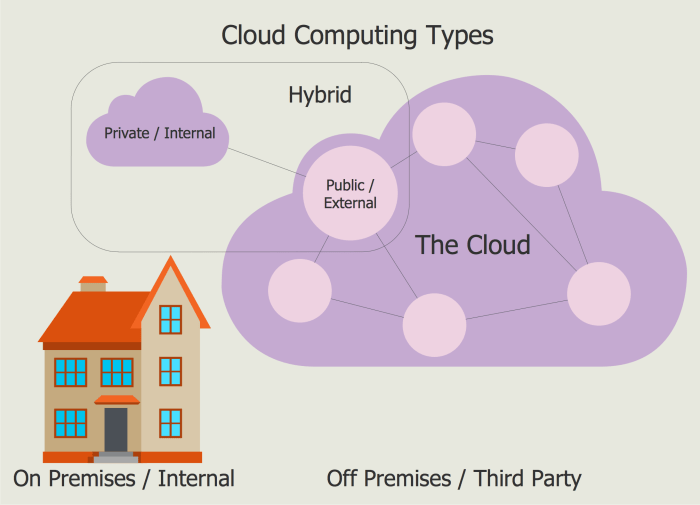
Cloud architecture diagrams play a vital role in visualizing and communicating complex cloud-based systems. They find applications in various aspects of cloud computing, including:
Capacity Planning
Cloud architecture diagrams help IT teams anticipate and plan for future capacity needs by visually representing the current infrastructure and identifying potential bottlenecks. This enables them to make informed decisions about scaling resources and optimizing performance.
For example, a diagram might illustrate the relationship between different cloud components, such as virtual machines, storage, and networking, and how they are interconnected. This information can be used to identify potential areas of contention or resource constraints, allowing IT teams to proactively address them before they impact performance.
Performance Monitoring
Cloud architecture diagrams serve as a valuable tool for monitoring the performance of cloud-based systems. By providing a visual representation of the system’s components and their interactions, diagrams help IT teams quickly identify performance issues and their root causes.
For instance, a diagram might highlight the relationship between application components, such as web servers, databases, and load balancers, and how they interact with each other. This information can be used to identify bottlenecks or inefficiencies that are causing performance degradation, enabling IT teams to take corrective actions promptly.
Troubleshooting
Cloud architecture diagrams simplify the process of troubleshooting cloud-based systems by providing a visual representation of the system’s components and their interdependencies. This enables IT teams to quickly isolate the source of problems and identify the appropriate solutions.
For example, a diagram might illustrate the network topology of a cloud-based application, showing the connections between different components, such as web servers, databases, and firewalls. This information can be used to identify network issues, such as latency or packet loss, and take steps to resolve them.
Security Analysis
Cloud architecture diagrams are essential for conducting security analysis of cloud-based systems. By visually representing the system’s components and their interactions, diagrams help security teams identify potential vulnerabilities and attack vectors.
For instance, a diagram might illustrate the security controls implemented in a cloud-based application, such as firewalls, intrusion detection systems, and access control mechanisms. This information can be used to assess the effectiveness of the security measures and identify areas where additional security controls are needed.
Cost Optimization
Cloud architecture diagrams can be leveraged to optimize cloud costs by providing a clear understanding of the resources being consumed and their associated costs. This enables IT teams to identify areas where costs can be reduced without compromising performance or security.
For example, a diagram might illustrate the relationship between different cloud components, such as virtual machines, storage, and networking, and their associated costs. This information can be used to identify underutilized resources that can be scaled down or eliminated, resulting in cost savings.
Compliance Audits
Cloud architecture diagrams play a crucial role in compliance audits by providing a visual representation of the system’s architecture and its alignment with regulatory requirements. This enables auditors to quickly assess the system’s compliance status and identify any areas of non-compliance.
For instance, a diagram might illustrate the security controls implemented in a cloud-based application, such as encryption, access control, and logging, and how they align with specific regulatory requirements. This information can be used to demonstrate compliance with regulations, such as GDPR or HIPAA.
Closing Summary

Cloud architecture diagrams are indispensable tools that facilitate effective cloud management and optimization. By selecting the appropriate diagram type, utilizing consistent symbols and notations, and maintaining clarity and simplicity, these diagrams empower IT professionals to make informed decisions, troubleshoot issues, and optimize cloud environments.
As cloud technology continues to evolve, cloud architecture diagrams will remain essential in navigating the complexities of modern cloud infrastructures.
